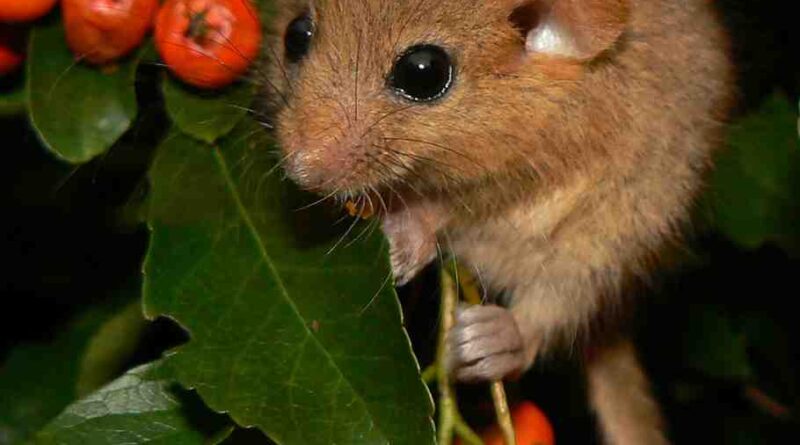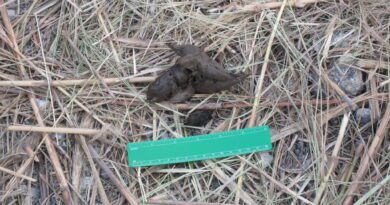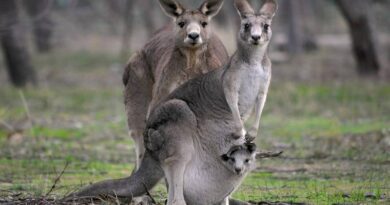DORMICE
DORMICE, rodents that tend to bridge the gap between squirrels and mice. With one exception they have bushy tails but are mostly mouse- rather than squirrel-sized and, like most mice, they are nocturnal. Dormice are agile climbers living in trees or in the shrub layer of woodland. The fur is soft and dense. It varies in colour from orange-brown to grey, and many species have dark marks around the eyes, accentuating the already large eyes. The feet are well adapted for climbing, with long flexibletoes, and the hindfeet can be turned outwards at right angles to the body enabling the animal to move confidently on slender twigs.
Their food is varied, including both animal and vegetable material, although it is mostly seeds and berries. The dormice of the temperate region are noted for their hibernation, which begins in October. They become very fat in early autumn and during hibernation become torpid and cold, but may awaken occasionally, The reputation for deep sleep is well founded, since even the daily sleep is unusually pro- found and is accompanied by a distinct fall in body temperature,
The Hazel dormouse of Europe (the Common dormouse in Britain) Muscardinus avellanarius is one of the smallest and has a distinctive orange-brown coat. It lives in dense shrubby undergrowth where it con- structs neat nests, only using the shredded bark of honeysuckle. The largest European species, the Fat dormouse Glis glis, is more arboreal, nesting. in holes or in exposed positions quite high in the woodland canopy. It is also known as the Edible dormouse, since the Ancient Romans fattened it for the table in special jars.
One of the most attractiye of all dormice is the Garden dormouse Eliomys quercinus, a European species with a conspicuous black mask and a long tail, bushy only towards the tip. It frequents rocky hillsides as well as woodland and is especially common in the Mediterranean region. By far the most isolated species of this family, geographically speaking, is the Japanese dormouse Glirulus japonicus, since dormice are quite absent from the mainland of temperate eastern Asia.
African dormice belong to the genus Graphiurus and are found throughout the forest and savannah zones of Africa. Although primarily arboreal, they are frequently found living in the thatch of houses. FAMILY : Gliridae, ORDER: Rodentia, CLASS: Mammalia.



